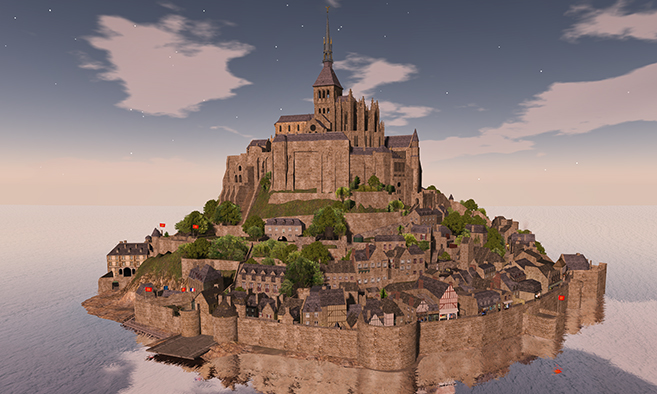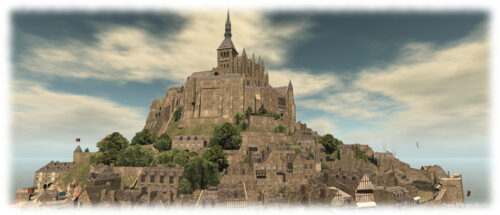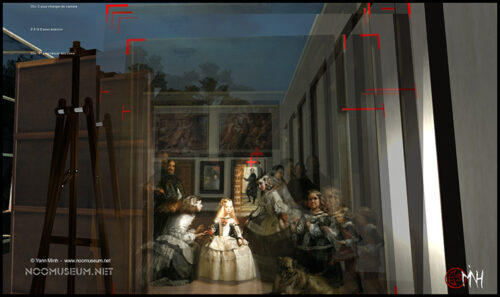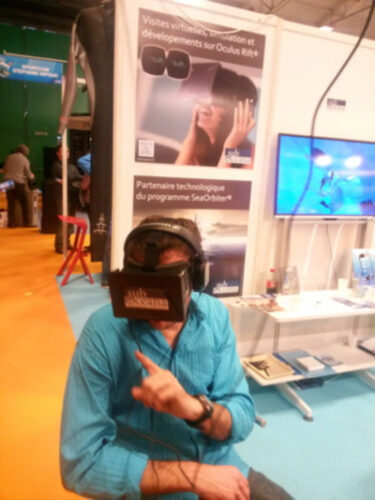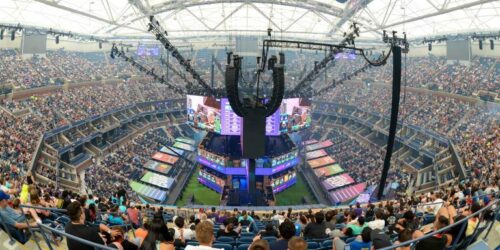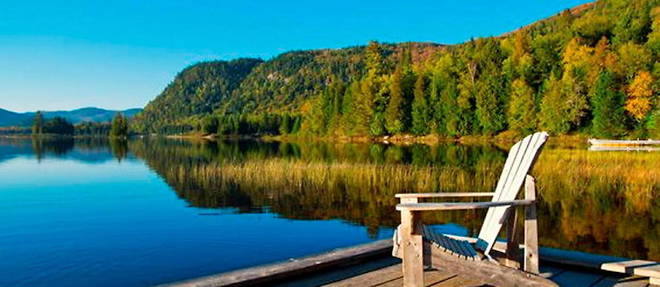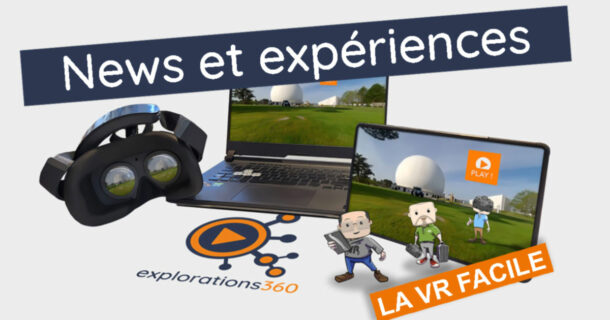Our relationship with virtual tourism. The metaverse report danger...
The title of this article is a question that was put to me on QUORA, and before giving any hints as to the answers, let's recall the promises of the Metaverse, and those of tourism.
Metaverse definition
Metavers in French. It's an open tool, fully customizable by its users. It's an evolution of Internet use whose main value propositions are :
- A spatialized, immersive digital world built by its users
- Persistent (when I turn off my PC, the world lives on)
- The ability to interact with virtual elements in the environment and with other users
- The ability to manage your avatar (appearance, gestures, gait, expressions, etc.). With subjective view in VR helmet immersion and/or 3rd person avatars (piloted and seen from the outside). Long-lasting avatars.
- Ubiquity (being in several places at once, piloting several avatars if you wish)
- A diversity of users and communities
- Freedom unconstrained by arbitrary moral rules
- A universe with its own economy
- An interoperable tool, with the ability to manage possessions and move from one environment to another if different Metaverse bricks were based on different technologies.
- A multi-platform tool (PC, MAC, smartphones, virtual reality headsets, mixed reality...)
- Decentralization and security (data is certified, and the system belongs to the users, not to a single entity)
Tourism
For a long time, tourism was the only way to discover other people and places, long before the advent of modern communication and even transportation tools. In our modern society, tourism has become synonymous with :
- Job creation
- Infrastructure and service development
- Heritage preservation and enhancement
- Cultural exchanges
- Mutual understanding
- Local community development
Virtual tourism via the metaverse?
Let's frame the subject a little: before talking about a "metaverse danger", it's worth pointing out that the Metaverse doesn't yet exist in its absolute form(article); it's being built in bricks, but is already inducing new uses that prefigure it! For tourists, the Metaverse will never replace a visit or a trip, just as flight simulation has never replaced the pleasure of flying, or put amateur (or pro) pilots out of work. Nor have car racing games with immersive headsets replaced real racetracks.
However, we need to think about how we "consume" travel. I was discussing this with a friend not long ago, who told me that his experience of visiting the Sistine Chapel was not the best memory of his stay in Italy: crowds, hubbub, everyone shoulder-to-shoulder, noses up, eyes on their smartphones... It's a far cry from a mystical or architectural experience.
Today, a digital twin lets us immerse ourselves in it for as long as we like, dimming the lights, with spatialized sound, letting us fly up to the ceiling, see details of the paintings, connect with friends, a personal guide, etc... with an ambience so close to the original, that one wonders if it's still worth creating such a human flow on the real monument. Especially as most of the time, it's become a case of ticking a box on your list of selfies for your Instagram account.
So, from a French or Italian perspective, a virtual visit to the Sistine Chapel may seem excessive, but is it really so absurd when you think about it? Would a Japanese or a Hawaiian have the same point of view? "Virtual tour of the Sistine Chapel" is a very popular keyword on Google, as is "virtual tour of the Château de Versailles", "virtual tour of the Louvre" or "virtual tour of the Grotte de Lascaux". And from France, do we think the same of more distant destinations?
Wasn't there also a craze to revisit Notre Dame intact, just after its tragic fire? All of a sudden, the virtual world was becoming an essential conservatory of heritage, accessible from anywhere, and "notre dame de paris virtual tour" was skyrocketing in Google Trends! ScanPyramids VR, the virtual tour of the Khéops pyramid organized by the Cité de l'architecture in Paris, was such a success that the operation is regularly restarted. The tour teleports a group of six people, equipped with a VR headset and accompanied by a guide, onto the Giza plateau for forty-five minutes.
"This form of off-ground tourism or tourism 4.0 will develop without eclipsing tourism, which remains a time to experience elsewhere. The virtual enables multisensory experiences or experiences that are impossible in the real world, but it won't replace climbing Mont Blanc, for example."
David Nahon, Director of Immersive Experience at Dassault Systèmes(article).
The place of social issues
Visiting a digital twin of the Vatican doesn't mean that its "in real life" access is off-limits to the public, but it does mean thinking about how and why we consume tourism. Above all, it's a reflection on our individual behavior towards the most popular tourist sites, which are often subject to excessive pressure . On theother hand, life in the surrounding neighborhoods, the little restaurants, the human exchanges, the atmospheres, the smells, the local recipes, etc... all made the richness of my friend's trip.
The uses
It's all about thinking about use, and the relevance of use!
The tool could enable several people to share an immersive experience in a place that cannot otherwise be shared between friends, or members of the same community: because it's too far away, too expensive, or as mentioned above, too much tourist pressure (and therefore needs to be preserved), too dangerous for me, etc.
Given the pressure on tourism, these tools provide an opportunity to discover new places, and better distribute visitor flows. In some countries, such as France, we're talking about using social network influencers to propose new destinations, to preserve others; VR headsets and applications on their Stores are a good way to discover and prepare.
Thanks to digital twins, and if you feel like it, you can go and visit your chosen accommodation in immersion on a 1:1 scale, prepare a slightly complicated hike (get your bearings, get an idea of the difficulties), etc. My children have never visited a site with as much curiosity and playfulness as the day they visited Mont-Saint-Michel in Second Life the day before going there "in real life": they were on the lookout for all the little details they'd had time to observe "flying" over the streets or "diving" into the basements. Surprisingly, the surprise and discovery were multiplied tenfold.
It can also complement a tourist site, offering visitors the chance to immerse themselves in the past or the future, either on-site or remotely, through rich interactions!
The place of art and nature
FranceFrance, the world's leading travel destination and oldest tourist nation, can set an example by reflecting on the place of art in vacations, and respect for nature, landscapes and local people.
Jean VIARD, sociologist and CNRS research director at Cevipof, Centre de recherches politiques de Sciences Po Paris.
The NøøMuseum, virtual museum, or the "First Virtual Science Fiction Festival After The End Of The World"; inaugurated in May 2013, is the dematerialized extension in cyberspace of the "Festival de la Science Fiction et de l'imaginaire de Roanne" founded thirty years ago. The production of its various digital versions is the fruit of a collective effort involving artists, sound designers and network technologies.
Real-time 3D reconstruction of Velasquez's painting Las Meninas, by Yann Minh for the Noomusueum, with the possibility of wandering IN the painting to better understand its composition. https://www.noomuseum.net/
We could also mention experiences that bring us closer to nature, some of which are inaccessible to many of us, or not (any more) to be had for conservation reasons: the summits of high mountains, deep dives, journeys into lost heritage, into the future...
In the virtual experiences we've built up, I remember Laurent Ballesta, oceanologist and naturalist photographer, saying in October 2013 "Ohlaa, I'm going back!" as he discovered an immersive virtual dive to a depth of 120 m with the Coelacanth, which he had studied in the Gulf of Mozambique .
At the time, he took pleasure in pointing out that fewer people had dived with this mythical fish than there had been men on the Moon... 4 minutes to descend to 120 m, but the 5-hour decompression stop ascent in open water for 30 minutes of exploration at the bottom, the physical training, the cost of the equipment and the complexity of the gas mixtures to be breathed must have had something to do with it...
Laurent Ballesta - January 2014, pointing at a Coelacanth, 120m down...
We brought the experience to hundreds of people in January 2014 at the Paris International Diving Show. Today, 10 years on, the experience is portable in any home for the price of a smartphone. Tomorrow, it will be standard.
Drawing a parallel between the Moon, space and the visitor's standard, there's also a free online "iss virtual tour" of the International Space Station (with VR headsets or on your PC).
The Metaverse, like virtual reality and augmented reality tools, is a relevant way of creating a continuum of visit, enabling a link between before, during and after the visit. And it's a place where we socialize, just as we do in Second Life (an ancestor of the Metaverse), where I worked for over 4 years and met "users", initially through their avatars, who became friends and/or partners "in real life". Let's not forget that in 2021, Second Life's gross domestic product (the money generated by transactions in the platform's internal currency, which many say is "dead") will amount to $650 million.
What kind of tourism do we want?
If we bounce off this "consumer tourism" phenomenon, we shouldn't forget the new generation raised on Fortnite or Minecraft, with their hundreds of millions of users. Universes in which we don't just play games, but also create content, attend shows, and socialize online, and... in the real world, with the organization of events that bring together tens of thousands of people in the same place.
As a result, tourism and local businesses are boosted! And this is certainly where the real debate begins, as not all tourist sites are prepared for this:
"What kind of tourism do we want for tomorrow, and how will new tools impact our most harmful behaviors?"
Jul 27, 2019; Flushing, NY, USA; A general view of Athur Ashe Stadium during the Fortnite World Cup Finals e-sports event at Arthur Ashe Stadium. Mandatory Credit: Dennis Schneidler-USA TODAY Sports
To find out more about the promise of the Metaverse:
https://www.explorations360.com/15-ans-dans-le-metaverse/
To take a closer look at tourism, sociologist Jean Viard looks back at the year of the pandemic and how it permanently altered our sense of travel and vacations:
https://www.lepoint.fr/voyages/l-an-zero-du-tourisme-12-06-2021-2430682_44.php#11

💡 A credo: simplify life for 360° content producers with a universal "NoCode" tool that transforms images or videos into truly interactive immersive experiences!
🏁 My first brand, subOceana, was born in "a" metaverse, in 2007... 👂 And already with this idea: putting technology at the service of meaning and the human.
🏷 I've never really liked labels, headings, categories or other drawers: every community has its own language, every profession its own jargon, and depending on the world you're in or the people you meet, what makes sense 🧑🎓 in one case can turn out to be completely ridiculous 🥳 or outdated in another.
🤩 What I really like: spending hours testing, twisting tools, breaking established habits. Innovating*, not necessarily to make something new, but to make tech invisible and put it at the service of those who need it. Like when you spend time cooking a complicated dish, having in mind the pleasure of simplicity and conviviality 🥂 that will follow.
It's this technological conviviality that I seek to cultivate. And that's what we transmit at explorations360.
🕵♂️🕵♀️👨🚀👩🚀👨🚒👩🚒👷♂️👷♀️👨🎨👩🎨👨💻👩💻 A customer (ours are professionals), who can easily appropriate technology (in this case, virtual reality) and let it take a back seat to the experience and the message, will use it to increase their ability to create, train, communicate, share and inspire their own audience.
Virtual reality must not impress. It must transform.
At explorations360, we help hospitals, manufacturers, cultural players and training organizations to engage their teams, train effectively and pass on knowledge in new ways.
Thanks to a simple yet powerful platform, we have already helped more than 100 organizations create customized immersive experiences:
- Industrial safety courses
- Care habituation for the disabled
- Interactive cultural tours
- Experiential & inclusive tourism
- Immersive training for the food industry
What sets us apart?
- Our integrated production, scripting and support capabilities
We believe that technology should be replaced by the message.
==》You want to transform the way you train, communicate or raise awareness?
Contact me via the form or book an appointment via the DEMO button.
*Innovating: talking 6 months before others about things... that we've been doing for 10 years to general indifference, sometimes tinged with a little mockery 😉

